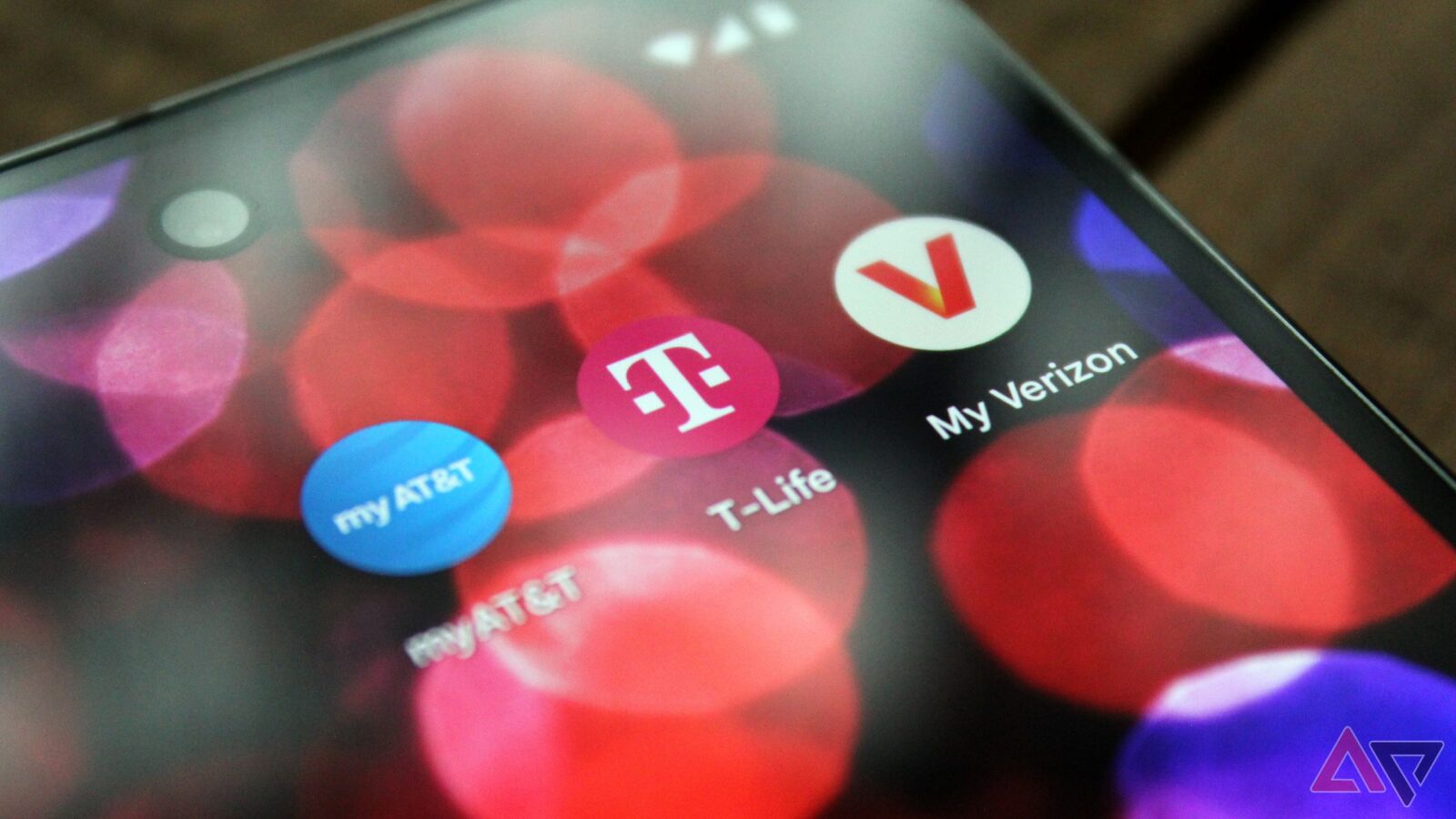8 Things To Check Before Moving To A New Carrier

Contents
Switching to a new mobile carrier often brings the promise of improved coverage, faster data speeds, or savings based on the plan you choose. However, overlooking critical details can lead to unexpected costs, service interruptions, or device incompatibility. Before making the switch, evaluate the network reliability, read the contract’s fine print, and understand the perks to ensure the new carrier aligns with your lifestyle and needs.
This guide highlights eight essential things to check before moving to a new carrier. By verifying these aspects, you can transition seamlessly, avoid costly surprises, and secure a plan that delivers the performance and value you’re looking for. Whether you’re chasing lower bills, stronger signals, or better perks, these steps help you make an informed and appropriate decision.

Related
8 Network coverage and performance
The first thing to check is the network coverage in the places you spend the most time, such as home, work, school, or frequently visited areas. While major carriers like Verizon, AT&T, and T-Mobile provide coverage maps on their websites, these maps sometimes paint a rosy picture that may not represent reality.
For a more accurate assessment, check third-party tools like OpenSignal, RootMetrics, or CellMapper, which offer real-world data on signal strength, download speeds, and call reliability. To be doubly sure, ask others who use the same carrier about their experience, or consider checking Reddit and other forums. You could also test the network yourself via a prepaid SIM for a few days to get the best idea.
Pay attention to the type of network technology available. For example, 5G coverage varies. Some carriers deliver ultra-fast mmWave 5G in specific dense urban areas but revert to 4G or 3G in rural regions. If you rely on high-speed data for streaming, meetings, or remote work, prioritize a carrier with robust 5G and LTE performance in your area. Checking coverage and network quality upfront could save you a lot of frustration.

Low monthly rates can seem enticing, but the final bill can swell up with taxes, surcharges, and hidden costs. To get the best idea, compare the total cost of plans, including base rates, device installment payments, and optional add-ons like device protection, roaming, or international calling.
You might be eligible for discounts for enrolling in autopay, bundling multiple services, or adding family lines. Also, be aware of long-term commitments and the ability to switch in the future if you find something that better suits your needs. Check out tools like WhistleOut and CarrierCompare. Some carriers provide plan calculators on their websites to compare offerings from different carriers.
Scrutinize the fine print for additional costs, such as activation fees, early termination penalties, or charges for exceeding data limits. Some “unlimited” plans throttle speeds after a set data threshold under the pretext of a “fair usage policy,” which could hinder performance or savings for heavy users. Also, check if promotional rates expire after a few months, especially because carriers can change plans at any time. By calculating the “true cost,” including fees and taxes, you can avoid sticker shock.
6 Device compatibility

Not all phones work on all carriers due to differences in network technologies (GSM vs. CDMA) or supported frequency bands (especially for 5G). Before switching, verify your device’s compatibility on the carrier’s website, contact the support team, or check your phone’s instruction manual for connectivity information. While most modern smartphones are unlocked and support most bands, older models or carrier-locked devices may not be completely compatible or may not perform to their best ability.
Before upgrading, compare the carrier’s financing and trade-in options with buying the device outright (unlocked) from retailers like Amazon or Best Buy, as some carriers limit advanced features to their branded devices. This bit of research can prevent the hassle of poor performance or unexpected costs while switching.
If you plan to upgrade, explore the carrier’s device financing options, trade-in programs, or promotions. Compare them to buying outright from retailers like Amazon or Best Buy. Some carriers limit advanced features, such as visual voicemail or tethering, to their branded devices. Ensuring your phone is fully compatible (or budgeting for a new one) prevents the hassle of poor performance or unexpected costs after you switch.
5 Contract terms and lock-in periods

Promotional deals for free or discounted devices often come with long-term contracts that lock you in for 24 or 48 months. While this is the norm, review the terms to understand early termination fees, so you have the flexibility to change your device or carrier within a reasonable timeline. Termination fees can range from $100 to $350, so you might not save much money if you need to switch. Prepaid plans or off-contract devices offer greater flexibility, but they lack perks such as free streaming services.
Investigate whether the carrier offers a trial period to test their service risk-free. For example, T-Mobile’s Network Pass provides three months to try its network, while Verizon and AT&T often have 14-day or 30-day return windows. Some MVNOs, like Mint Mobile, offer money-back guarantees. Knowing these terms allows you to commit with confidence without worrying about unnecessary costs.
4 Porting your number
Transferring your existing phone number to a new carrier is usually simple, but missteps can cause delays or failures in transferring. Before you start the process, confirm with your current carrier that there are no porting fees or termination penalties (if you are under a contract). Do not rush the process or cancel your old service before the transfer is complete, as this could release your number to the pool.
Keep essential information such as account number, billing details, and the transfer PIN handy before you start. The process generally takes a few hours, but it can take one to two days, depending on the carrier.
3 Additional perks and benefits

Source: Netflix
Carriers often bundle extras like free subscriptions to streaming services (such as Netflix, Disney+, or HBO Max), cloud storage, or generous hotspot data allowances. Assess whether these perks are valuable to you and if they justify the plan’s cost. For example, if you subscribe to a service included in the plan, you could save $10 to $20 monthly.
Examine the terms of these benefits. Some are temporary (usually six months) or tied to premium plan tiers. Also, explore loyalty programs, like Verizon’s rewards for upgrades or T-Mobile’s weekly deals. Comparing these extras across carriers helps you maximize the value of your plan, especially if the perks align with your needs.
2 Customer service
A carrier’s customer service quality can impact your experience, particularly when things go wrong, such as billing errors, technical glitches, or changing plans. Research user feedback on platforms like Reddit, Trustpilot, or Consumer Reports to gauge satisfaction with a carrier. This is usually where premium carriers differ from budget MVNOs.
If you can, test the carrier’s support by reaching out with questions via phone, live chat, or email before signing up. Check if they offer 24/7 assistance, in-person store support, or virtual diagnostic tools. A carrier with reliable, accessible support can save you time and stress when issues arise.
1 International roaming

If you are a frequent traveler, international roaming policies can be the deciding factor between carriers. Some plans include free or cheap roaming in select countries, especially in Canada and Mexico. Day passes on Verizon and AT&T can cost upwards of $10 with limited data, while budget carriers may offer no roaming or charge you per-MB rates.
Also, check if your phone supports the necessary bands for international networks. Explore the price delta between international roaming add-ons and getting an extra SIM. Saily is a popular option worth considering if your phone supports eSIMs.
Switch wisely
Switching to a new carrier is a significant move, but checking these key factors sets you up for a smooth and profitable transition. By spending time researching, you can sidestep common issues like surprise fees, weak signals, or incompatible devices, ensuring your new carrier delivers lives up to your expectations.
It helps to know how you use your device, so you can weigh the perks while deciding. Take these steps seriously, and you’ll enjoy a seamless move to better mobile connectivity.
What’s your reaction?
Love0
Sad0
Happy0
Sleepy0
Angry0
Dead0
Wink0



![the-material-3-expressive-redesign-of-google-clock-leaks-out-[gallery]](https://betadroid.in/wp-content/uploads/2025/05/18769-the-material-3-expressive-redesign-of-google-clock-leaks-out-gallery-280x210.jpg)






Leave a Reply
View Comments